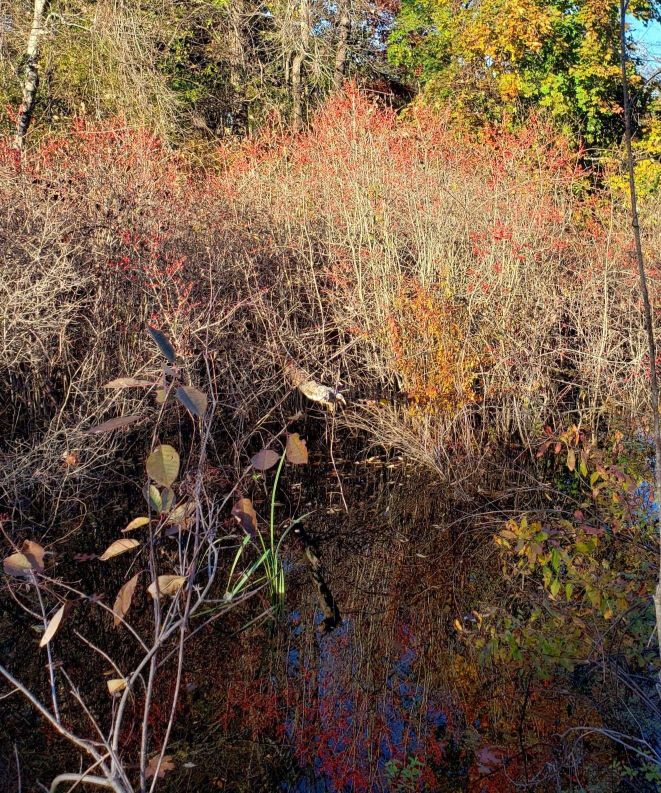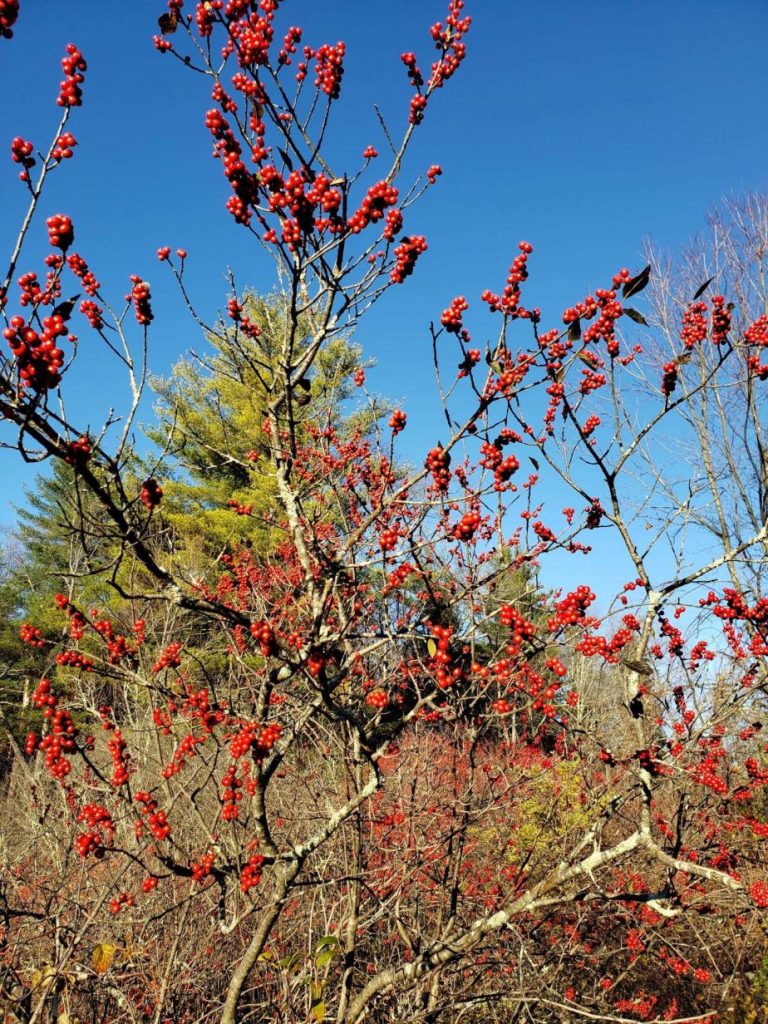Most gardeners are familiar with evergreen hollies, a traditional plant used for holiday decorations with its glossy green leaves and stunning red berries. There are various species of hollies native to different areas of the world but the evergreen holly native to the eastern part of the US is American holly, or Ilex opaca. It grows in various soil conditions from sandy to average and does well in full to part sun. Inkberry (Ilex glabra), is also a native evergreen but doesn’t produce showy berries. However, there is a deciduous native holly called winterberry (Ilex verticillata), which sometimes surprises gardeners with its naked branches bearing red berries.


The natural habitat of winterberry is along streams and ponds as it loves wet areas, so it can solve the problem of what to grow in wet soil. However, it will also do well in soils of average moisture. Gardeners should be aware that winterberries are dioecious, meaning that each plant bears either male or female flowers and only the females produce berries but must have a male companion for this to occur. Therefore, you will need more than one of these shrubs, but one male can pollinate up to 5 females. Winterberries make lovely hedges so using them in this manner makes it easy to plant several shrubs. The berries will feed the birds but are not eaten until later in the winter, allowing gardeners to enjoy them for a long period. For a beautiful scene, be sure to look for them when they are covered with snow!


